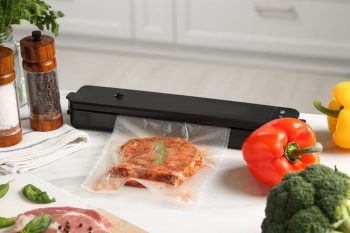
Moving a refrigerator is no small feat. It’s a hefty appliance that requires careful handling to prevent damage or injury. So, who can move a refrigerator? Essentially, you have two options: hire professional movers or do it yourself with the help of friends or family members. In this comprehensive guide, we’ll explore both options, discuss important considerations and precautions, and provide a step-by-step process for moving a refrigerator safely and efficiently.
Who can move a refrigerator? There are two main options: hiring professional movers or doing it yourself with the help of friends or family. Professional movers have the training and equipment to safely move heavy appliances like refrigerators. If you choose to move it yourself, you’ll need at least two people, an appliance dolly, moving straps, and a moving truck. However, this option can be physically demanding and potentially risky if not done correctly.
Professional Movers
Professional movers are trained and equipped to handle heavy appliances like refrigerators. They ensure a safe and efficient move by using specialty equipment and techniques. Several services can help you move a refrigerator, including:
- Dolly: This platform connects you with local truck owners who can provide assistance with moving heavy appliances.
- Airtasker: Here, you can find professional refrigerator movers near you.
- Great Guys Movers: This service can help you find appliance moving companies in your area, offering fully-licensed and insured movers trained to handle heavy equipment.
- Appliance Moving Company: Based in Cypress, TX, this service specializes in moving appliances like refrigerators, stoves, ovens, dishwashers, washing machines, and dryers.
DIY Moving
If you decide to move the refrigerator yourself, you’ll need at least two people, an appliance dolly, moving straps or ropes, and a moving truck or cargo van with a loading ramp. However, be aware that this can be a physically demanding and potentially risky task if not done correctly.
Risks Involved in Moving a Refrigerator
Moving a refrigerator involves several potential risks, including damage to the refrigerator, personal injury, floor and wall damage, leakage, oil leakage and coolant displacement, and mold and mildew development. To minimize these risks, it is essential to follow proper guidelines for moving a refrigerator, such as disconnecting and defrosting the fridge, using a dolly and straps, keeping the refrigerator upright as much as possible, and allowing it to settle before turning it back on.
Equipment Needed for Moving a Refrigerator
To safely move a refrigerator, you will need an appliance dolly with straps, a measuring tape, a screwdriver or drill, moving blankets, tape or rope, and at least two people.
Preparing a Refrigerator for Moving
Proper preparation is key to a successful move. This includes emptying and defrosting the refrigerator, disconnecting any wiring and water lines, removing any doors or shelves if needed, protecting your floors with rubber mats or cardboard, and using a dolly to transport the refrigerator.
Reinstalling a Refrigerator
Once you’ve successfully moved your refrigerator, it’s time to reinstall it. This involves positioning and leveling the refrigerator, connecting the water line (if applicable), plugging in the refrigerator, reinstalling shelves and drawers, and adjusting temperature settings.
Maintaining Efficiency and Lifespan After Moving
After moving, it’s important to maintain your refrigerator’s efficiency and lifespan. This includes allowing the refrigerator to settle, cleaning the condenser coils, checking the door seals, maintaining proper temperature settings, keeping the refrigerator and freezer full, ensuring proper ventilation, and regular defrosting.
In conclusion, moving a refrigerator is a complex task that requires careful planning and execution. Whether you choose to hire professionals or do it yourself, understanding the process and potential risks can help ensure a safe and successful move.
Frequently Asked Questions
How long should I defrost my refrigerator before moving it?
You should start the defrosting process at least 24 hours before you plan to move the refrigerator. Make sure to remove all food and leave the doors open to aid in the defrosting process.
What if my refrigerator has a water dispenser or ice maker?
If your refrigerator has a water dispenser or ice maker, you will need to disconnect the water line before moving. This usually requires turning off the water supply and then disconnecting the water line from the back of the refrigerator.
How long should I let my refrigerator settle after moving it?
After moving, you should let your refrigerator settle for at least 2-3 hours before plugging it in. This allows the oil in the compressor to settle back down, which can prevent damage to your refrigerator.
What are the proper temperature settings for my refrigerator and freezer?
The U.S. Food and Drug Administration recommends keeping your refrigerator at or below 40°F (4°C) and your freezer at 0°F (-18°C) to ensure food safety.
Why is it important to keep the refrigerator and freezer full?
A full refrigerator or freezer will maintain its temperature better than an empty one. The mass of cold items will help the refrigerator to recover more quickly after the door has been opened and closed. If you don’t have enough food to fill it, consider using water jugs or ice packs.












